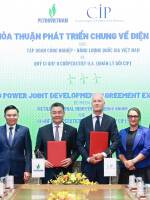
In a major step towards biodiversity protection and sustainable livelihoods, Huế People’s Committee has officially designated Phong Điền Nature Reserve, covering 40,760.47ha, as a protected area — with over 90 per cent made up of pristine primary forest.
The vast evergreen tropical rainforest, located across Phong Điền and A Lưới communes, sits at 700m above sea level and harbours a wealth of flora and fauna. Of the 597 recorded plant species, 50 are listed in Việt Nam’s Red Book and the IUCN Red List, underscoring the reserve’s global ecological significance.
Originally identified as a natural conservation zone in 2002, the reserve’s formal recognition marks a turning point for biodiversity conservation in central Việt Nam. Local authorities hope the move will boost forest-based ecotourism, protect endangered species and enhance livelihoods for surrounding communities through sustainable use of forest resources.
A particular highlight came in 2024, when two individuals of the Critically Endangered Edwards’s Pheasant (Lophura edwardsi) were spotted in the reserve. Once feared extinct in the wild, the species had not been seen in the area since its rediscovery in 1996. The recent sighting reaffirms the ecological importance of preserving this habitat.
With its dense canopy, rare wildlife, and renewed conservation focus, Phong Điền is now firmly on the map as a vital stronghold of Việt Nam’s natural heritage.

Saola (Pseudoryx nghetinhensis) – the critically endangered species – and large deer (Muntiacus vuquangensis) were the two first endangered species discovered in the reserve among 44 animal species (19 animals were listed in the IUCN’s Red List).
Up-to-date, Huế City has three nature reserves – the National Bạch Mã Park, the new Saola Nature Reserve and the newly introduced Phong Điền – on total 90,000ha.
The Bạch Mã National Park has been selected as the site for the world’s only breeding centre for the saola, a critically endangered creature that was the eighth new large mammal species to be discovered in the 20th century.
The first phase of the Bear Rescue Centre Việt Nam’s second branch at the Park was introduced by the Animals Asia Foundation (AAF) and the Forest Protection Department under the Ministry of Agriculture and Rural Development.

The city has also recognised the Tam Giang–Cầu Hai Lagoon as a Natural Wetland Conservation Site, covering an area of 22,000ha. It is the largest and most diverse brackish water ecosystem in Southeast Asia.
Huế has been strengthening cooperation with the World Wide Fund for Nature (WWF), international conservation organisations, and domestic agencies to expand nature reserves and implement wildlife protection programmes.
(VNS)




